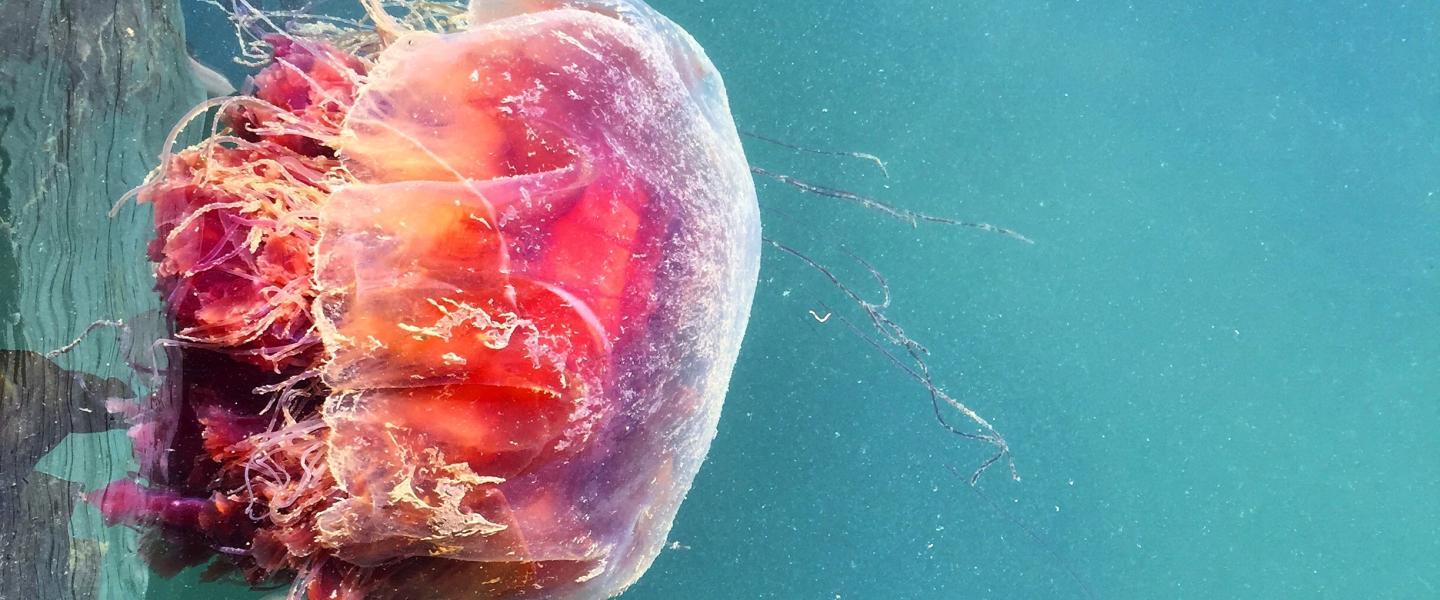
We’re right in the peak of jellyfish season here in the Salish Sea, so we’re starting to see a few different varieties floating around all the way from Georgia Strait to the shallows of Friday Harbor. If you sit on the docks of the marina, you may see a water jelly or a moon jelly lazily working its way through the water. If you come out on a whale watch and wildlife tour, you’re almost guaranteed to get your fill of jellyfish watching as well, and the kiddos may find them even more interesting than the whales! So here’s some brief information about the jellyfish species you may find on your trip to the San Juan Islands.
Jellyfish have a pretty interesting life cycle. It's split into two stages, the medusa stage (what we see floating around, looking pretty) and a polyp stage. Jellyfish undergo sexual reproduction during their medusa stage, in which the female releases eggs and the male releases sperm to fertilize them. A fertilized egg then forms a larva, which eventually anchors itself to a hard surface and forms a polyp. These polyps form gelatanous bodies that bud off from them to become immature jellyfish. Once those jellyfish mature, the life cycle starts all over again!
Life cycle of a jellyfish Sarah CuttingI was surprised when I learned how many varieties of jellyfish lived in the chilly waters of the Salish Sea. As it turns out, jellies are found all over the world’s oceans! Here are some of our more common species to look out for:
Moon Jellyfish:
Very common in our waters. Characterized by their opaque white color and a pink "clover" shape on the top of their bell. These are the least dangerous of our jellies, with a sting so mild it won't even hurt you!
Moon Jellyfish Marine Conservation SocietyWater Jellyfish:
Transparent little jellies with lines running along their bells. These jellies tend to swim with their tentacles facing the surface as well.
Lion's Mane Jellyfish:
One of the world's largest jellies, growing up to 7 feet in diameter. Along with a nasty sting, these jellies flaunt a gorgeous maroon color. I'm always excited to see these out on the water!
Lion's Mane Jellyfish Erick DowellFried Egg Jellyfish:
The most aptly named jellyfish. Very easily identifiable by their transparent white bell and bright yellow, yolk-like internal organs.
Comb Jellyfish:
The only "jellyfish" here that is not actually a jellyfish. While all the other jellies above are part of the phylum Cnidaria, comb jellies are Ctenophores! They move using little cilia paddles that line the sides of their bodies instead of pulsing their bell like other jellies do.They also shine iridescent in the right light.
Comb Jelly Sarah Cutting